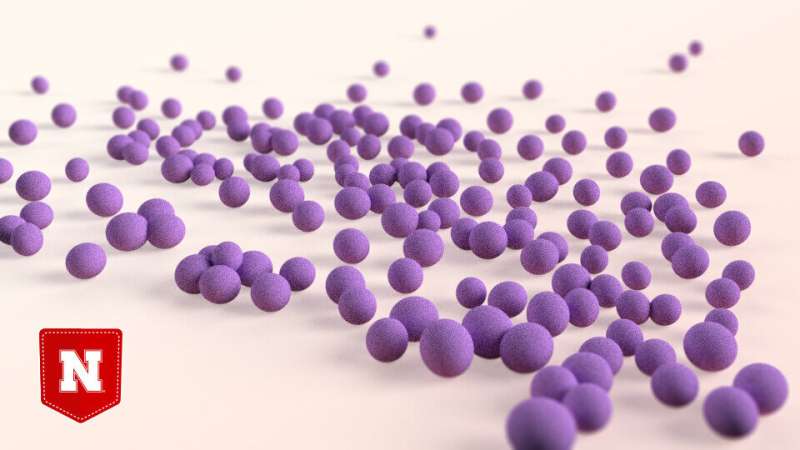A rendering of Staphylococcus aureus, a bacterial species known for causing staph infections. Credit: Scott Schrage | University Communication and Marketing
Staph infections pose lethal threats in hospitals, where the Staphylococcus aureus bacterium can be transferred from the skin or nasal passages into open wounds and, potentially, the bloodstream. The Centers for Disease Control and Prevention reported that staph infections killed nearly 20,000 Americans in 2017 alone. Antibiotic-resistant strains of S. aureus, including the notorious MRSA, present especially grave threats to patients.
For multiple reasons, researchers typically study S. aureus virulence and antibiotic resistance in vitro: outside of the human body, in so-called culture media that promote the growth of microorganisms. Some of that research has investigated how human serum—the portion of blood plasma without coagulants—influences the virulence of S. aureus. Far less has examined how serum affects the bacterium's survival and metabolism, the latter of which shapes every facet of its life cycle.
In a recent study published in Journal of Proteome Research, Nebraska's Greg Somerville, Robert Powers and colleagues analyzed two strains of S. aureus: one susceptible to the antibiotic known as daptomycin, the other resistant to it. The researchers cultivated each strain in a growth medium consisting of 55% serum—the approximate percentage found in human blood—before assessing metabolic changes and susceptibility to daptomycin.
Both strains were less susceptible to daptomycin when cultured in the serum-rich medium, suggesting that the serum diminishes the potency of the antibiotic. The bacterium also reduced its synthesis of multiple amino acids, increased its fermentation of other acids, and modified its production of a compound important for salt tolerance.
The difficulty of discovering new, effective antibiotics has become a worldwide health crisis. Incorporating serum into growth media to better mimic the milieu of the bloodstream, and accounting for bacterial responses to that milieu, could improve the odds of discovering viable candidates, the researchers said.
More information: Greg A. Somerville et al, Human Serum Alters the Metabolism and Antibiotic Susceptibility of Staphylococcus aureus, Journal of Proteome Research (2022). DOI: 10.1021/acs.jproteome.2c00073
Journal information: Journal of Proteome Research
Provided by University of Nebraska-Lincoln























